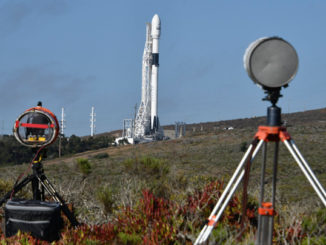SpaceX is set to launch its Falcon 9 rocket on October 22, 2024, marking a significant milestone with the deployment of its 1,900th Starlink satellite into low Earth orbit. The mission, known as Starlink 6-61, will take place from the Space Launch Complex 40 (SLC-40) at Cape Canaveral Space Force Station at 07:17 EDT (11:17 UTC).
The upcoming launch is notable as it continues SpaceX’s aggressive expansion of its Starlink broadband internet service, which has gained considerable traction globally. Following the deployment of 28 satellites during the Starlink 10-14 mission, this launch will contribute to a total of more than 1,900 Starlink V2 Mini satellites launched across 77 missions.
Weather forecasts indicate a 90 percent chance of favorable conditions at the opening of the launch window. However, this likelihood decreases to 65 percent as the window progresses, with meteorologists noting potential issues related to cumulus and anvil clouds due to isolated offshore showers.
The Falcon 9 rocket will utilize first-stage booster 1077, which will embark on its 23rd mission. This booster has previously supported key missions, including NASA’s Crew-5 and the GPS III Space Vehicle 06. Approximately eight and a half minutes after liftoff, the booster is expected to land on the drone ship, “Just Read the Instructions,” positioned in the Atlantic Ocean off the coast of South Carolina. A successful recovery would be the 134th for this drone ship and the 497th for SpaceX overall.
Recently, SpaceX announced a significant growth in its Starlink customer base, which has reached **7 million customers** across nearly **150 countries**. This figure represents a remarkable increase of **3 million** customers since September 2024.
Key milestones in Starlink’s customer growth include:
– **4 million** customers in September 2024
– **5 million** customers in February 2025
– **6 million** customers in June 2025
In a pre-launch video, Cornelia Rosu, Senior Director of Starlink Production, highlighted the rapid pace of satellite production at SpaceX’s facilities in Redmond, Washington. “Generally, satellite manufacturing is a very slow process. It takes people weeks or months to build a satellite,” she explained. “At SpaceX, we iterate very fast and we have learned how to build satellites at a **70 satellites per week** rate.”
Looking ahead, SpaceX plans to conduct at least **170 Falcon 9 launches** throughout 2025, with the majority dedicated to expanding its Starlink constellation. The upcoming launch on October 22 will mark the **108th** launch of the year.
Starlink satellites are designed and operated from the United States, aiming to provide high-speed internet connectivity across the globe.





































































